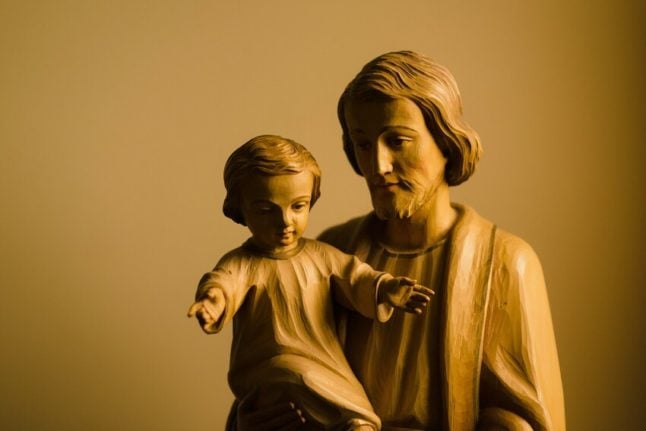Josefstag is a religious holiday observed across much of the Catholic, German-speaking world with a public holiday. In Switzerland, it is also known as Seppitag. It has a long tradition, observed for nearly a thousand years.
Who is Josef?
The Josef being observed each year on March 19th is St Joseph, husband of Mary and, according to scripture, the man who raised Jesus Christ.
Depending on the source, Joseph either made his living in first-century Judea as a carpenter or a stonemason. For this reason, he quickly became the patron saint of these professions during the Middle Ages.
With carpentry and masonry being some of the most vital professions of the period, it’s no wonder that the day became an essential fixture on the religious calendar, a day when most would down tools and enjoy a day off after an act of worship.
What happens on Josefstag? Are there traditions?
Throughout the centuries, Josefstag would be celebrated differently, depending on the very local traditions of each canton.
Some observed with a mass and a simple parade, while others held large (often raucous) meetings of those with the name Josef or one of its many variations—Jupp, Sepp, Seppl, or Pepi.
Farmers throughout Switzerland – and further into Germany and Austria – also use the weather on Josefstag to indicate the coming year’s harvest. There are many idiomatic or dialectical variations of these Bauernregeln (‘farmers laws’). Still, the gist is that a bumper harvest is coming if it’s sunny on Josefstag.
Read More: Which Swiss cantons have a holiday on May 1st?
Where is Josefstag celebrated as a public holiday?
The observation of Jpseftag is primarily centred on Switzerland’s Catholic, German-speaking regions in the central and eastern thirds of the country, but there are exceptions.
Of Switzerland’s majority German-speaking cantons, Josefstag is an official public holiday throughout Nidwalden, Schwyz and Uri.
Depending on the community, it is also a public holiday within the German-speaking cantons of Graubünden, Lucerne, Solothurn and Zug.
It is also an official public holiday in the French-speaking canton of Valais and the Italian-speaking canton of Ticino.
Anything else I should know?
Due to Switzerland’s cantonal system and ‘direct democracy’, public holidays can often become ‘hyper-local’ affairs. Many regions have removed certain religious holidays from the list of official public holidays, as their sheer number was hampering business.
Therefore, if you’re travelling on or around March 19th, it’s worth checking whether tourism attractions or other services will be open that day.
It’s also worth considering that Josefstag is on a Tuesday in 2024.
This means that many in those regions will also take Monday, the day before, off as a B. Factor this into your planning.



 Please whitelist us to continue reading.
Please whitelist us to continue reading.
Member comments